
Website: www.kaygilmour.smugmug.com


Website: www.kaygilmour.smugmug.com
2024 April 2 – 17
Ft. Lauderdale Florida to Toronto Canada
Introduction
Let me start with a slight misquoting of Alexander Pope: “To war is human, not to war seems impossible.” The Atlantic Coastal Cities we visited were all involved in three important wars in US History: The Revolutionary War, The War of 1812, and the Civil War. Starting the cruise in Fort Lauderdale as we did, I could have included the Seminole Wars fought in Florida from 1816 to 1858. However, we did not visit any sites associated with those tragic wars. And technically, those wars are not over since neither the Seminoles nor the Miccosukees have ever signed a peace treaty with the USA.
Being engulfed with war history can be seen as right for travelling with a company called “Viking Cruises” since the historical Vikings were constantly at war with some other peoples. But let’s concentrate on the important ports we visited on this “siege” or better to say this cruise.
1. Charleston, South Carolina (April 4)
2. Norfolk, Virginia (April 6)
3. Manhattan, New York City, New York (April 8)
4. Halifax, Nova Scotia, Canada (April 10)
5. Breton Island, Louisbourg, Nova Scotia, Canada (April 11)
6. Quebec City, Quebec, Canada (April 14)
7. Three Rivers, Quebec, Canada (April 15)
8. Toronto, Ontario, Canada (April 17)
How to account for the other days on the Viking Ship Polaris? Well, they were the so-called “sea days” when no ports were entered. There was a total of 6 of these precious days, one of them was unanticipated, but necessary, because the sea conditions did not allow us to enter the port of cap-Aux-Meules, iles de la madeleine. Many people who like cruising profess to resent and dislike the sea days, but Kay and I have always appreciated them because they are “free”days to do exactly what you want to do: read, write, sleep, play trivial pursuit with fellow passengers, watch the ocean and whatever creatures you can spy. There were not many such sightings on this trip, however.
Each of the above cited cities took part in all three of the major wars mentioned above. Indeed, those parts they played are usually the reason people come to visit them as well as to enjoy the
ambience that prevailed in the wars: historical buildings related to the times, forts and old styles of architecture, wartime cemeteries and memorials.
Most of these cities feature museums documenting their participation in the struggles, whether on the winning sides or the losing ones.
Sadly, as we are all aware, some of the wars did not resolve all the issues which had caused the wars. We live with some of the aftermaths still today (particularly systemic racism, though our current governor in Florida does not want our public schools to teach that history or discuss the problems associated.
Let’s take a moment to talk about this new Viking expedition ship, designed especially for visiting the Polar regions of the Globe. She and her identical sister ship, The Octantis were launched in 2022. There are 6 decks on these 665 ft. long and 77ft wide ships which carry 378 passengers and 256 crew members.
The prow and hulls are ice-hardened for sailing in Arctic and Antarctic waters. Ironically, on its most recent Antarctic trip, the Polaris was hit by a huge rogue wave which damaged windows on the 3rd deck and caused the death of one passenger and less serious injuries to 30 others. After an official investigation, Viking made changes to the windows and was cleared for sailing.
All the other Viking ships we have been on in the Caribbean and the Mediterranean and other European waters were the same design both inside and outside, but these expedition ships are very different. Just as comfortable and similar in that all public areas are named the same: the Living Room, World Cafe, Library.
Our only disappointment about this ship was the Spa area. We have always enjoyed the spas on the other Viking ships but in the new design, the spa was given short shrift. Too few showers, no Jacuzzi, and worst of all was the depth of the water in the pool.
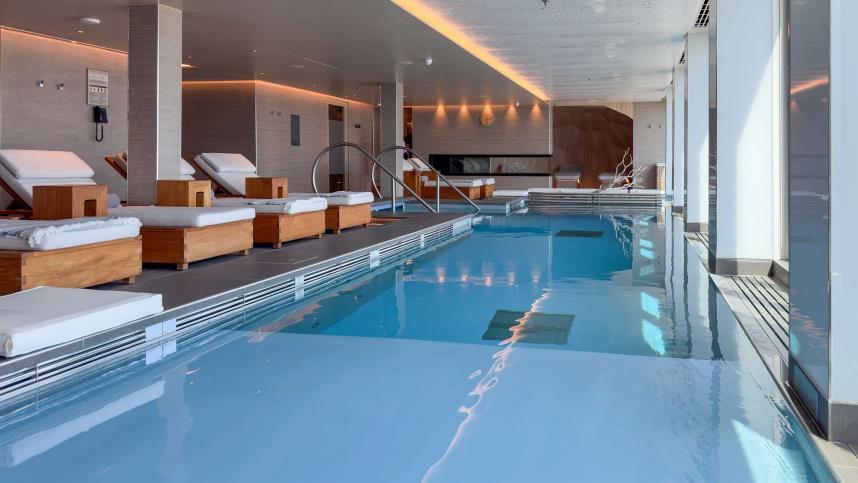
A short person like me couldn’t stand on the bottom and keep my head above the water. And there were no places along the sides where a short person could sit and enjoy the warmth of the heated pool.
Polaris has a hanger Deck which houses the Zodiacs, the Special Operation Vessels, Kayaks and the Submersible. It also allows for boarding these from this deck.


There are Science Labs which support the many scientific projects Viking supports with agencies and organizations such as NASA, Cornell Ornithology, Smithsonian, National Geographic and many others. So many of the crew double as various kinds of scientists working every day with such things as water sampling, bird counts, weather observations with balloons launched weekly.
Fascinating stuff and passengers are invited and encouraged to take part where appropriate and observe if not possible to actually help.


All this is interesting and important, but what amazed Kay and I most about this new ship is its incredible stability. New kinds of stabilizers, thrusters, ballast performers, etc. have made the ship completely stable. No matter how high the swells or active the ocean or the river waters, we felt no movement. This feature makes the ship perfect for crossing the usually tumultuous Drake’s Passage getting from Ushuaia, Argentina, to the Antarctic Peninsula. We felt so confident about the ship’s safety and comfort technology that we signed up to return to the Antarctic next year in February. Now - back to the voyage up the Atlantic Coast for 1051 nautical miles.
A voyage of 490 nautical miles from Ft. Lauderdale. An overnight sailing.
As one of the oldest cities in the USA, it’s no surprise that Charleston has a rich history and that it was involved in all three of the wars already mentioned. Surprised, we learned that Charleston is number four in the order of oldest cities visited on this cruise.
The oldest is Quebec, Canada, in 1608. Next is New York City in 1624, then Three Rivers in Canada in 1634, then Charleston in 1670, then Norfolk VA in 1682, followed by Ft, Louisbourg Canada in 1713, then Halifax, Canada in 1749, and Toronto last in 1793. Have to Add, for fun, that Ft. Lauderdale didn’t appear until 1895 followed by Miami in 1896. My own hometown of Dania, Florida (now Dania Beach for some unknown reason) was incorporated in 1904.
Back to Charleston, a place we have already visited several times because it is such a charming city with wonderful restaurants serving true Piedmont foods, a garden and house tour at least once a year, which is well worth the visit. Charleston’s nickname is “The Cradle of the Confederacy” due to the fact that the US Civil War officially started with the confederate firing on Fort Sumter in Charleston harbor. In its infancy the British named the city Charlestown, but after the Revolutionary War, the citizens renamed it Charleston because they thought the older English name sounded “too British.”
Because of its age, Charleston figured in all the wars we are looking at in this journal. The city was an important trading port from its earliest days, particularly in the slave trade and in cotton for the looms of Britain. When the Revolution broke out, South Carolina was a divided state with probably half the citizens loyalists to the British Crown. Many historians believe that South Carolina had the most loyalists of any of the 13 original colonies. About 5000 men fought with the British, as did many runaway slaves who had been promised freedom for their service. Cherokee Indians also fought on the loyalist side for the same reason: freedom from struggles with the USA. Many South Carolinians avoided fighting on either side though their loyalties were also with the British. Neither of these promises was ever fulfilled by the British since they left South Carolina on December 14, 1782, as a defeated country.
Interestingly, the SC rebels had their own form of the Boston Tea Party. Since the port had received many shipments from England, the people refused to unload them and instead of dumping the boxes into the Atlantic, they left the supplies in warehouses and allowed them to just rot and spoil in place. The Revolutionary War ended on September 3, 1783, with the signing of the Treaty of Paris.
By the time the War of 1812 started, there were very few, if any, loyalists in the colony to join the British side of this conflict. It was chiefly a marine war since the most important cause of the
conflict was the British practice of interfering with American shipping, often boarding US commercial ships and taking the sailors off, claiming that they were AWOL from the British fleet. No battles were fought in the harbor or on SC land and the chief result of the war for the Southerners was distrust of the federal government because the conflict caused the economic collapse of the economy of Charleston and SC in general.
Political divisions had only worsened between the end of the War of 1812 and the start of the Civil War on April 12, 1961, when Confederate Troops fired on federally held Ft. Sumter. The often contested causes of the civil war are widely debated but most every historian agrees on at least two major causes: abolition of slavery and states’ rights. However, I am not planning to go into the weeds on that subject. I merely want to describe how important the City of Charleston was in the conflict and how the war left so many legacies in the city: not all of them positive. Immediately, it is easy to see the huge old city homes and plantation estates leftover from the riches owners gleaned based on the work of the slaves in the cotton fields and every other businesses in SC.
The old slave market is still prominent on the city tours though it now is used as an open air market for craftsmen, farmers, artisans, wood carvers, and weavers. The Customs House is one of the oldest colonial buildings in the country.

The mansions on “Rainbow Row” are examples of how rich the city really was. Fort Sumter was in federal control when the war started but it fell fairly quickly into Confederate hands. An interesting side story we learned is that Lincoln was supposed to visit Ft. Sumter after the Feds had retaken it, but he instead decided to go to the Ford Theater with his wife that evening. How different the USA would have been had he gone to Ft. Sumter instead.
It is true that Charleston was under siege for 587 days while the Union Forces blockaded the Harbor after the retaking of the Fort. Needless to add, there was little to no sympathy for the Union side of the Civil War and South Carolinians were very active in sending so-called “fire-eaters” to other Southern states to encourage them to join the confederacy to fight the Union soldiers.
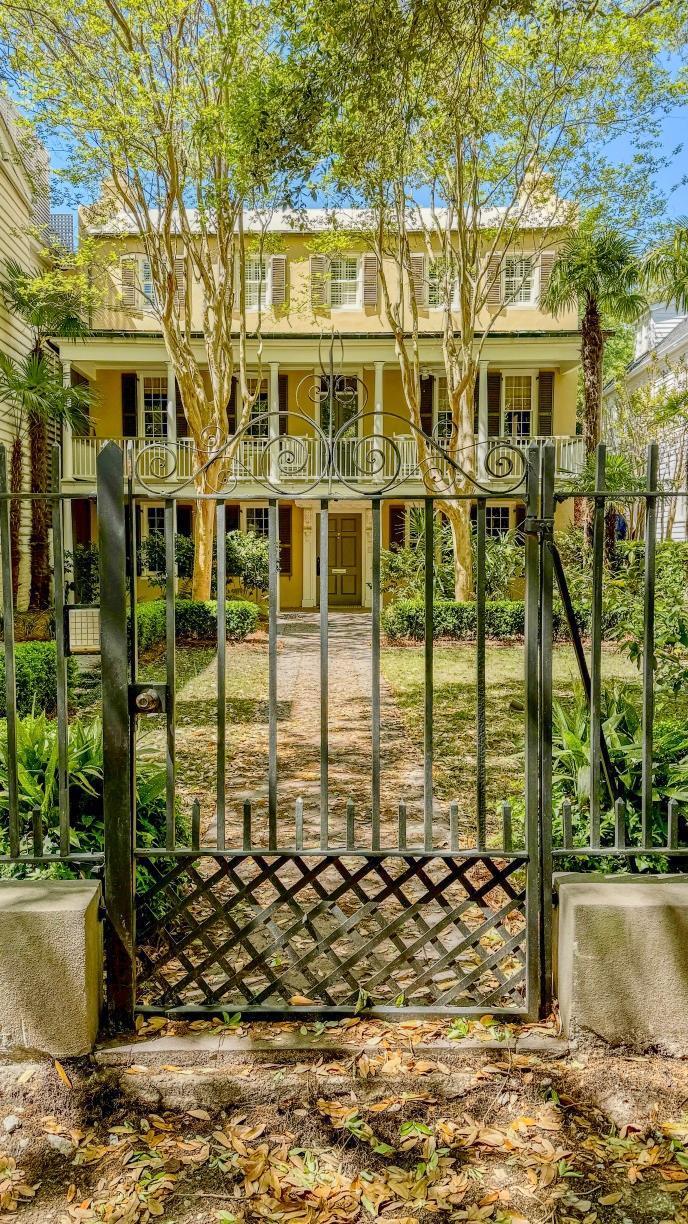

Sadly, today, there is too much sympathy for “The Lost Cause” with continued glorification of the Confederacy and the heroes of battles with arguments over whether or not remaining confederate statues should be removed. It even took SC a long time to remove the confederate flag from its state flag. Our excursion there took us by busy through the streets and over to the harbor to see Ft. Sumter. We went inside a couple of churches and visited one of the storied older homes. It was fun and still warm while we were there. We also enjoyed Rainbow Row, and the many churches we saw from outside this time.
Once again, we admired and photographed the many examples of wrought iron used as decorations, gates, window boxes, outside bannisters, and even statuary.
Our next port of call during this cruise was a city still enmeshed in the trappings of a fortress mentality. After all, it is the home of one of the largest naval ports in the world with hundreds of ships and more than 30,000 Navy and Marine personnel always in residence. Our excursion took us through neighborhoods with myriad styles of military housing.
From a distance, we viewed the port and then we were driven to the city’s beautiful garden with a history of its own, dating from the Depression Days when jobs were rare, and people were grateful to FDR for his many make-work projects. This municipal garden is a product of one of his ideas. At first black women were hired to clear the swampy area and plant desired shrubs and trees. Paths were created and some buildings constructed for a Visitor Center and shelter for tools and machines to maintain the garden grounds. Later in its history, both white and black men also worked to create this special place. And it is indeed quite beautiful. We were not there in full blossom time, but there was enough color and variety to interest us in our walking exploration.


Needless to say, Old Norfolk was involved heavily in all three of the wars being discussed. During the Revolutionary War, the British fired on Norfolk beginning on January 1, 1776. Many buildings were burnt to the ground and ships in port destroyed. The rebels continued the burning of their city so that it could not be used as a base for British actions. It was the only American city completely destroyed and then rebuilt. The British decided to punish the city in this way because the citizens refused to supply Dunmore’s troops with food and water. Therefore, the Norfolk area was never actually occupied by the British.
The British aimed at Norfolk during the War of 1812 as well and the Battle of Craney Island was important in the American efforts to save Norfolk and Portsmouth which were major trading ports for the new nation. The Brits wanted to seize the USS Constellation, but they were thwarted by a chain barrier across the Elizabeth River which was never breeched. During the fighting in this area, Sir John Hatchett, bastard son of George III, was killed in another setback for the British.
In the Civil War, Norfolk and nearby Gosport Naval Yard were major targets for the Union forces. When the Union army and navy conquered Norfolk, the loss was devasting to the southern rebels chiefly because they had no home for their biggest ship, the SS Virginia. Though the rebs had held the area since 1861, many historians give credit for the Union capture of the city and its ports to Abe Lincoln’s personal involvement in directing the attacks.
It surprised us to find that our excursion in the Big Apple was the one we enjoyed most! Why were we surprised? Because we have been to NYC so often that we felt like we knew the city well. We had a very enthusiastic and knowledgeable guide and that accounts for much of our own pleasure.
On the bus, we were driven through many neighborhoods of Manhattan we had never seen before. Of course, we knew Chinatown and Central Park and the upper East Side. But we did not know that there is a Koreatown or where Hell’s Kitchen really is or why the various areas are so named. He ended the excursion at the 9/11 memorial, and we were stunned at the additions made here since we last visited several years ago.


Many new buildings have been added. The Greek Orthodox church that was destroyed has been completely rebuilt of the same Carrara marble and design as before. It is a beautiful edifice which proves the resilience of our secular democracy. The soaring white bird sculpture created by Calatrava signifies the love of peace around the world.
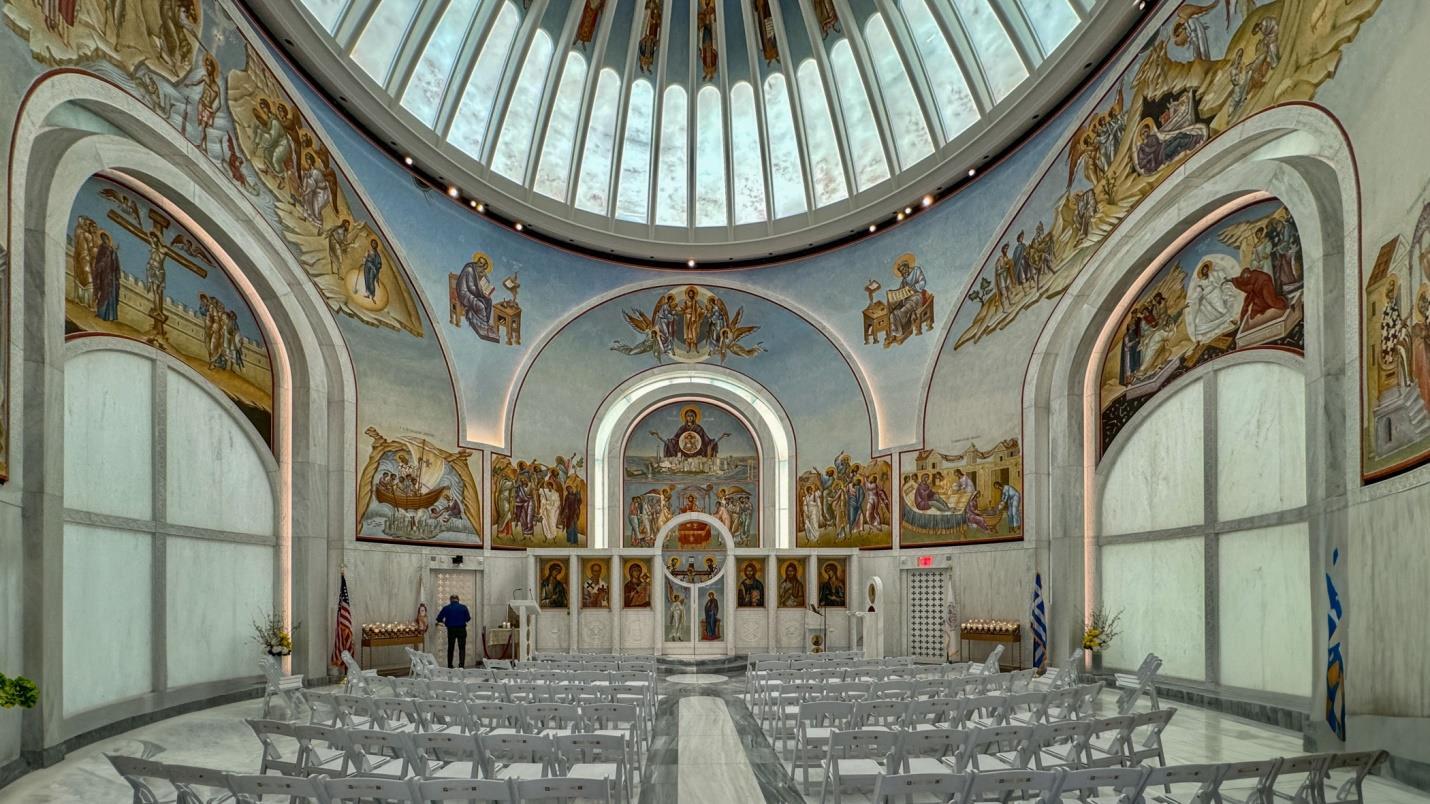

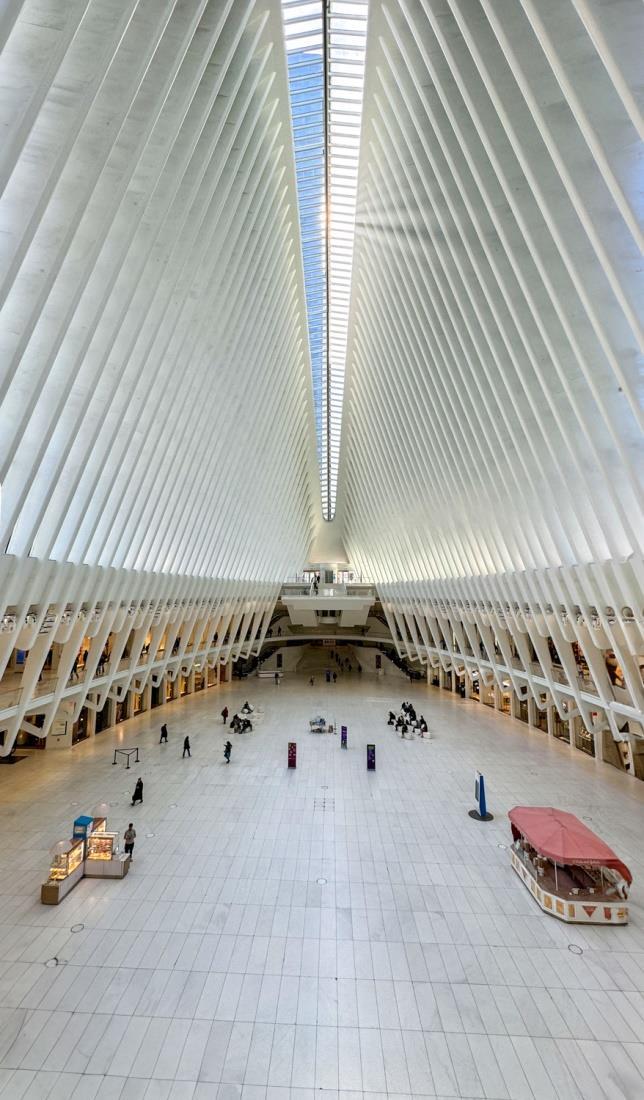
The structure in front of the sculpture, (the Oculus) is now a major meeting place for trains, subways, cars, and people. It is enormous and has shops, restaurants, and various businesses nestled inside the grand hall. Folks coming in from New Jersey, outer boroughs, and elsewhere meet here where all the transportation meets and carries people into the city. Our entry and exit from the New York Harbor were thrilling as always because of the bright lights and the well-lit Statue of Liberty.
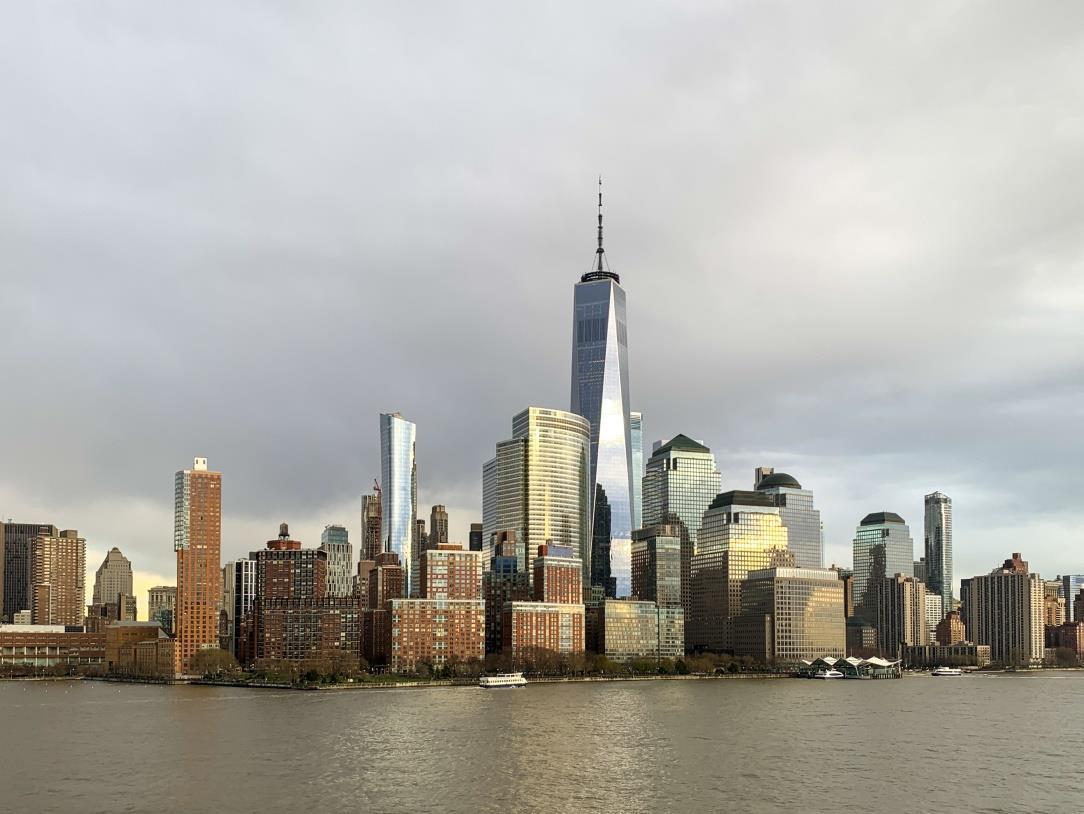
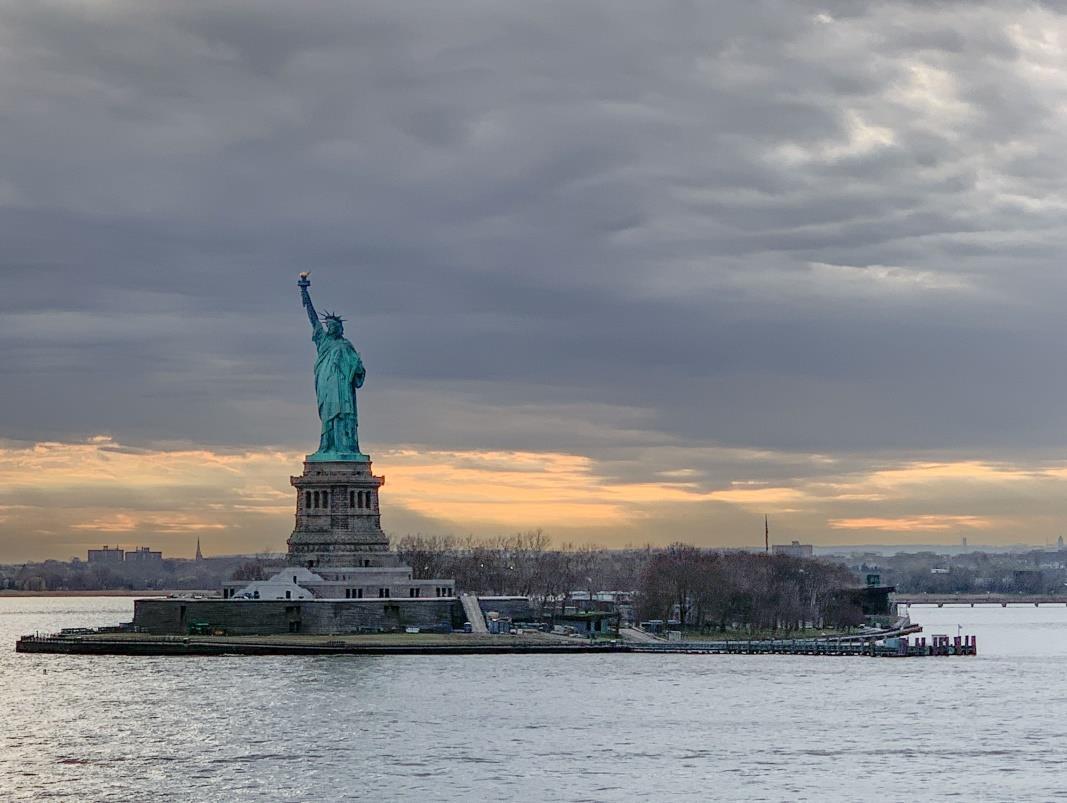
Needless to go into all the ways that New York City was involved in any of the three wars being discussed. The city was central to the revolutionary war, the war of 1812 and the Civil war. Every high school graduate was exposed to this information, so I will just cite a couple of interesting facts about the involvements. Quite important is the fact that the city was a central hub of the colonies and that 1/3 of the battles of the war for independence were fought in the state.
In the war of 1812, New York suppled 63,790 infantry soldiers, 2,415 Cavalry members, 8830 artillery troops, 77, 896 miscellaneous groups with over 2000 of them being black soldiers. State soldiers played the biggest part in the Battle of York. Because it was such an important port as well, New York provided much of the funding for the war.
In the Civil war, New York was once again the chief supplier of fighting men, supplies, and military equipment. Because it was home to most of the Union’s political leaders and newspapers, the city was the biggest fount of information which shaped the progress of the war. Sad statistics include the fact that of the 400,000 Union soldiers, 22,000 died in combat, 30,000 from disease or accidents and 36 were executed for treasonable acts like desertion. Historians have estimated that New York alone poured 38,000,000 dollars towards the war effort.
It’s somewhat surprising that this city was so involved with all three of the wars that were primarily United States conflicts. Also surprising to find out that there were some citizens of Halifax who were sympathetic to the American positions.
We went first to Peggy’s Cove, famous for its association with the crash of Swissair Flight 111 that crashed into St. Margaret’s Bay September 2, 1998

We were amazed at the changes in the approaches to the light house at Peggy’s Cove and all and all the amenities that made everything safer for tourists. There was also a gift store which hadn’t been there when we first visited several years ago. And since Kay and I had no hats or ear protection in the now really cold weather with all the strong winds, we bought proper knitted headwear there.
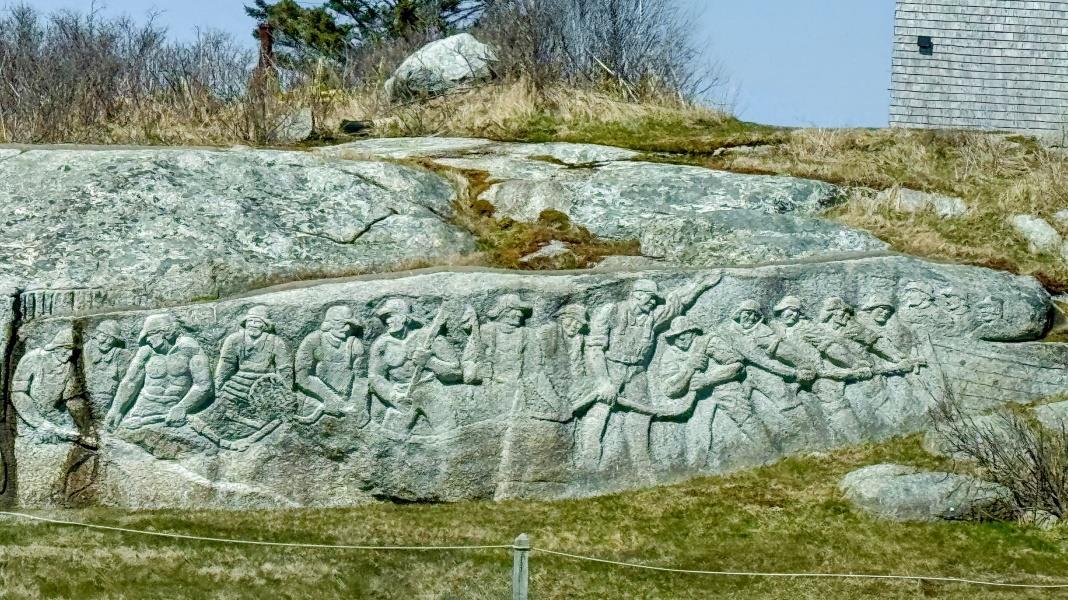
Sculptor and painterWi lliam E. de Garthe lived in Peggy's Cove.
He produced the 100-ft long granite sculpture dedicated to Nova Scotia’s fishermen.
There is a special cemetery in Halifax where many of those who perished in the RMS Titanic catastrophe are buried.
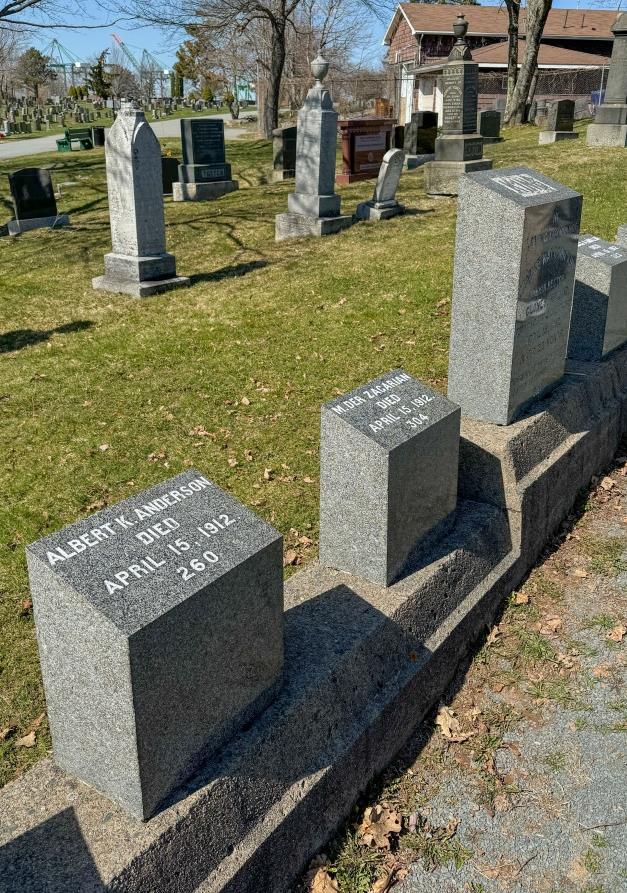
Our guide through the cemetery was particularly interested in personalizing the folks whose names are on the headstones. She had done considerable research to find information about each of those persons, informing us of their lives, families, accomplishments and even information about how they had come to be on the maiden voyage of the supposedly unsinkable ship.
Our day was spent on a very cold visit to Fort Louisbourg on Cape Breton Island. It has undergone considerable changes and improvements as well since our previous visit. More of the old buildings have been restored and opened to the public, paths around the very large fort area have been improved as well. There were some shops and coffee houses available too. We learned during our guided tour here, the difference between a “fort” and a “fortress.” With this information, we realized that this place is really a Fortress because it was a structure that was military but also enclosed a city. A “fort” is strictly a military construction.
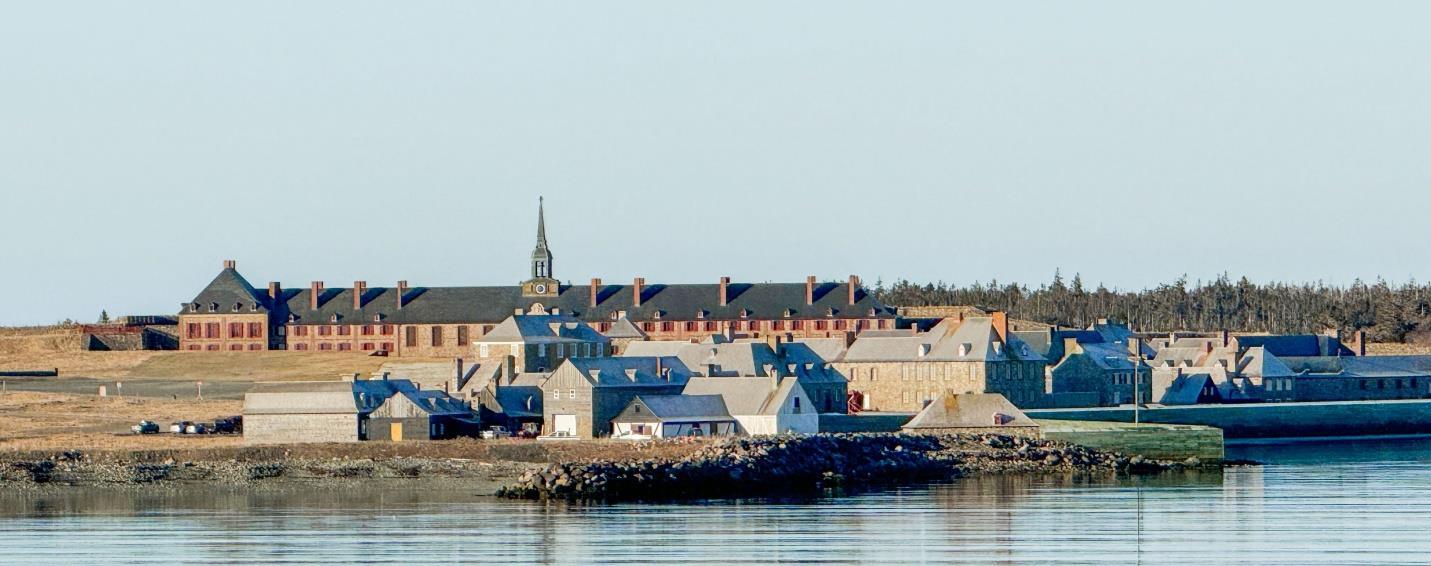

Now, to the Nova Scotia connections with the US Wars. When our rebellion against the English began, many Nova Scotians were sympathetic to our desire to free ourselves from British control. After all, they were still governed from the UK as well. But American Privateers (a polite name for pirates) conducted so many raids and pillages against Nova Scotian towns and villages as well as Halifax, that the positivity soon turned to enmity and the province populace did not want to aid the American war effort in any way. Actually, the Nova Scotians helped Britain in its effort to seize part of what is now Maine in order to form a new colony called New Ireland for Canadian loyalists who stayed true to Britain. That area is now a Canadian province, New Brunswick.
As far as the other two US wars that affected Canada in general and Nova Scotia specifically, it is fair to say that the Canadians remained firmly on the British side of the War of 1812 and that they tried to be neutral as regards the American Civil War, trading with both the Union and the Confederacy. Of course, individual citizens acted on their own convictions and there were some men who fought on the Union Side but very few recorded as having fought on the side of the Confederacy.
Founded in 1608, 16 years before the Dutch settled New York City, this was the oldest city we visited during the St. Lawrence River cruise. It is a beautifully preserved monument to the French attempts to claim a significant portion of North America. Old buildings cannot be altered on the outside, streets are still cobble-stoned, It was the only walled city built in the Americas north of Mexico. There were 4 gates into the city, and we can still see the remnants of the wall and the entrances.

French is the primary language, though English is widely spoken. All official signage is written in both.
An interesting sidelight is that we could see that the bricks in some of the buildings are not straight anymore. Our guide told us that this is not because Quebec is sinking but because the land is rising. So far, the Quebec City and state governments are not worried that this evidence of ground shifting shows that the buildings are unstable or unsafe.
The city of Quebec is built in two levels as it rises up the hills. There is a funicular car that takes people between levels if they do not wish to climb up or back down.
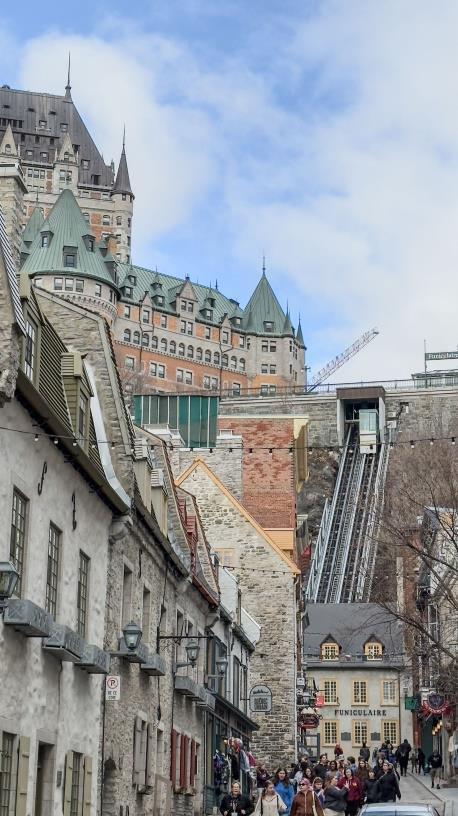

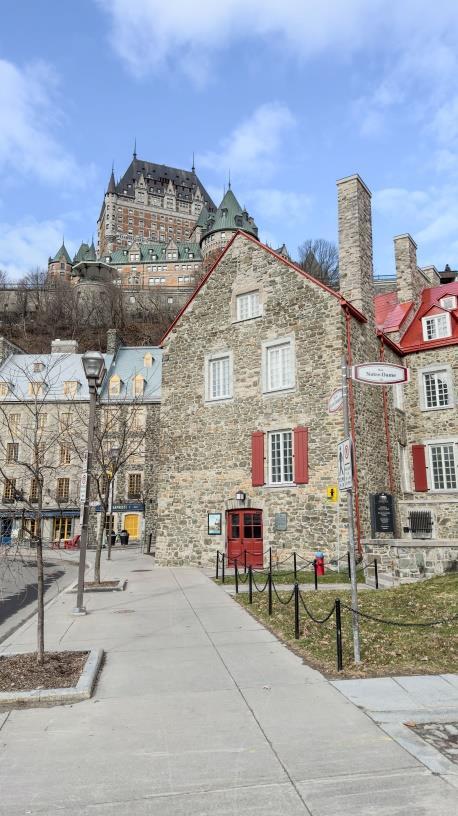
Perched on a promontory of the upper level is the historic hotel, the Fairmont Le Château Frontenac. The Château was designed by Bruce Price and built by the Canadian Pacific Railway company in1893. Don’t forget your platinum credit card.
The famed Plains of Abraham where an important battle between the French and the British was fought on September 13, 1759, has no relation to the Biblical Abraham. Instead, the property was owned by a Canadian man named Martin Abraham who donated the land to Quebec for a wonderful city park. By the way, the British won that battle which is known in Canada as the Battle of Quebec. Another world famous place in Quebec is the Basilica Cathedral of Notre Dame which was the first Catholic parish north of Mexico.
After our walking tour of this gracious city, we were taken by bus to the island of Ile d’Orleans to visit Montmorency Falls and the renowned Basilica of Sainte Anne de BeauPre. We had an enjoyable drive across the river onto the island and there we felt taken back to the 18th century because the houses, the farms, the roadways, towering trees all conspired to make our imaginations believe we were there. The two big attractions did not fail to impress either.
Out first stop was at the church shrine which is one of eight national Catholic Shrines in Canada. Inside were gorgeous stained-glass windows, mosaics, paintings, and wood and stone sculptures. The church is spacious and well-lit too. It sits on the St. Lawrence River and is about 19 miles east of Quebec City. It has been credited with many miracles for sick and d disabled people by the Catholic Church and is a pilgrimage site for many faithful people. It receives about a million and a half pilgrims every year.
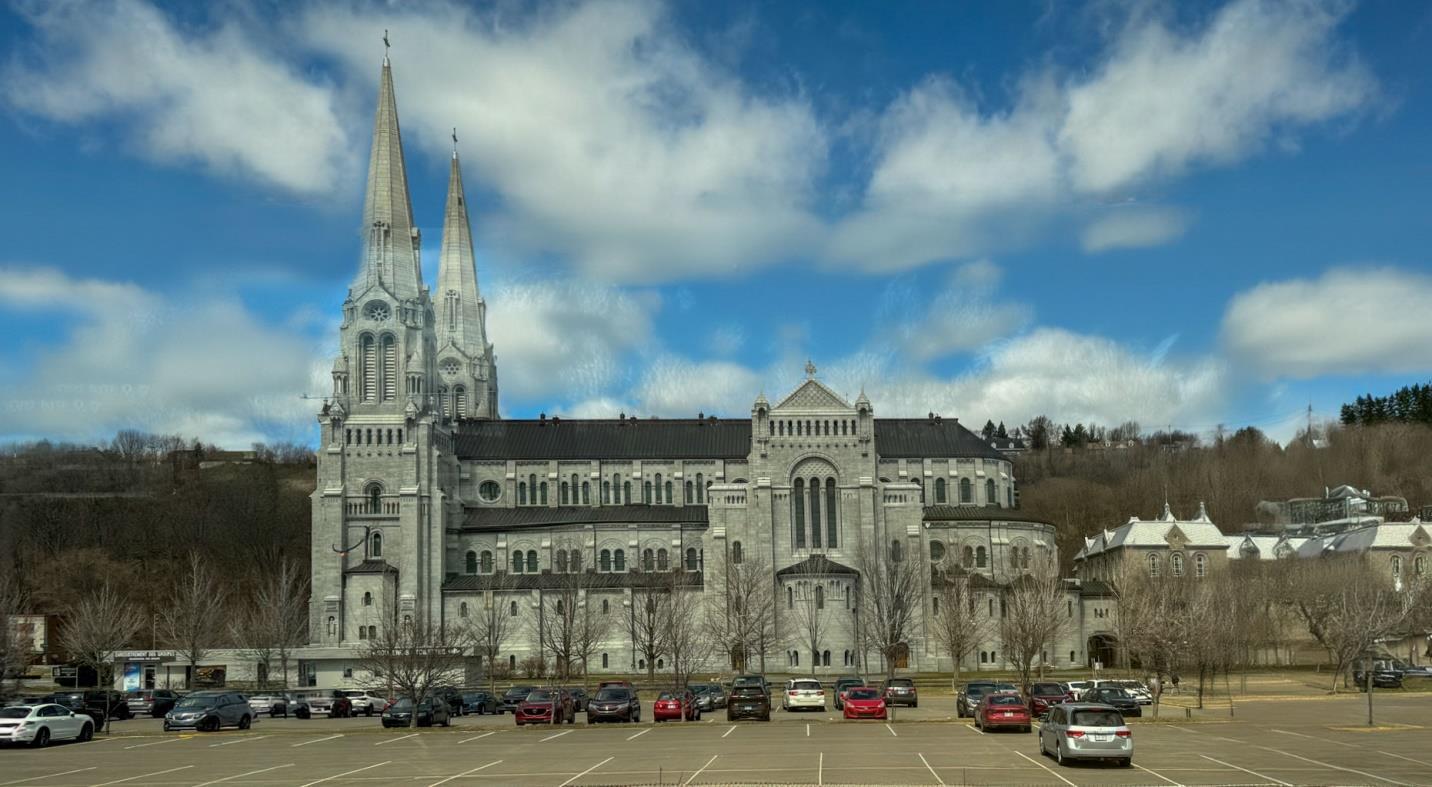
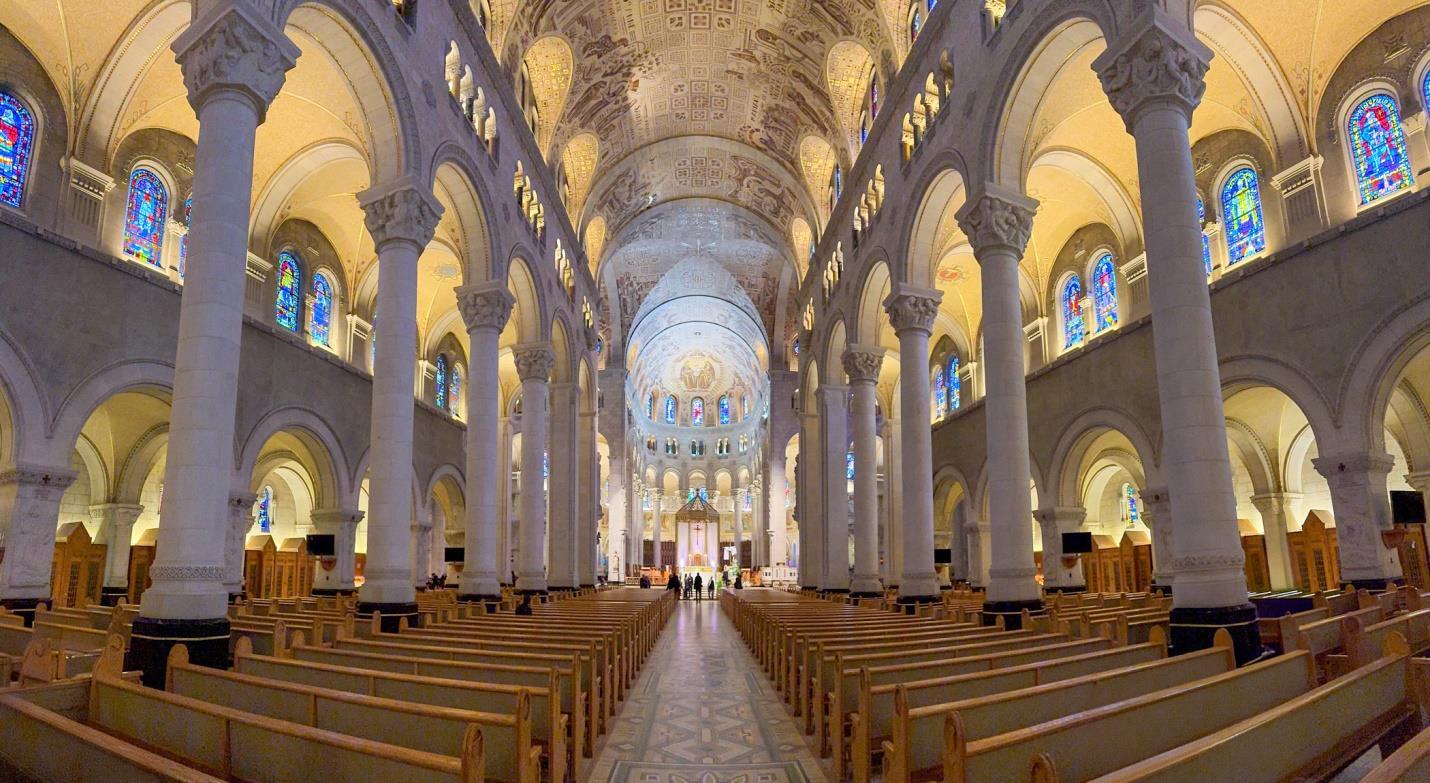
Montmorency Falls was a jaw-dropping sight as well. It is 272.3 ft. High, 98.4 feet taller than Niagara Falls. It sits between the sedimentary rocks of the Laurentian Range and the volcanic rocks of the Appalachians. 46,000 cubic feet of water spill over the cascades every second. The fall’s yellow glow comes from the high content of iron found in the waters. In deep winter, the falls freeze into a huge cone shape. No wonder the Canadians are so proud of it.
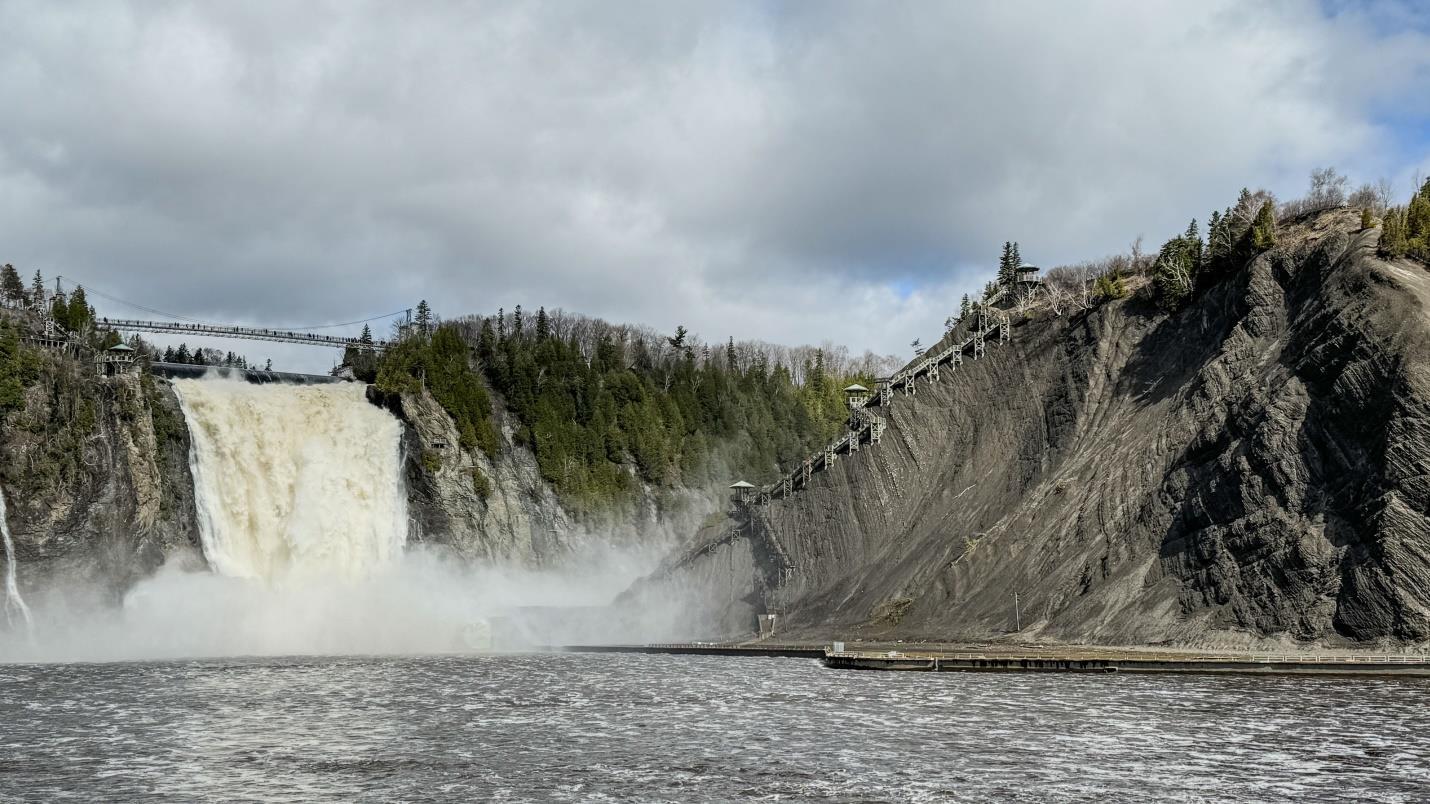
There are many ways to view the falls from different protectives: the boardwalk around the bottom of the falls (back about 200 ft); a train ride that was not operational while we visited also runs along the foreground; a cable car system that flies above the falls, and at least three different trails to the top where there is a bridge across the waters. We chose a walk on the boardwalk at the bottom of the falls and gloried in the mighty flow from which we could feel the spray even though we were far away from the plunge pool. Needless to say, the Basilica and the falls were the highlights of our visit to Quebec City and Quebec Province.
As far as the wars are concerned, Quebec had its own problems with the French and Indian Wars which pitted them against the indigenous people and the British. The US did have unpleasant conflicts during that war, but Quebec and our own country were not fighting with each other.
In English, Three Rivers, was founded in 1634. The city was created as a French fur trading center and later became a major producer of paper products. Our young guide amused us as she discussed the awful odor that always prevailed in the air until very recently when the paper mills shut down. We remembered the exact same situation when we moved to Jacksonville. The paper mill smell was treated with the saying “It’s the smell of money.” A huge mining project of the Rio Tinto mining company has taken over and is the biggest employer in the city.
This small city is now more famous for the production of maple syrup. We were taken to a “sugar shack” where a gentleman who had been in the business of maple syrup production for many years. He had several acres dedicated to his sugar maple trees and was proud of his success and eager to talk about it. The first thing he told us was quite surprising. When the trees are tapped to harvest the material for making the syrup, it is NOT the sap that is being collected, it is the water that has collected in the tree. Everyone was really startled since we always believed that the tree sap created the syrup. He went through the production process which included prompt boiling the water to kill bacteria collected along with the liquid. Modernization and progress have improved the sugar maple production process. Our host offered us samples of his honey products including syrup and a taffy type candy he makes. It was really delicious and the high point of our visit to this old city.
Next on the list of places to see in Three Rivers was the beautiful Catholic Cathedral in the city. This minor basilica is called Notre-Dame-du-Cap Basilica.
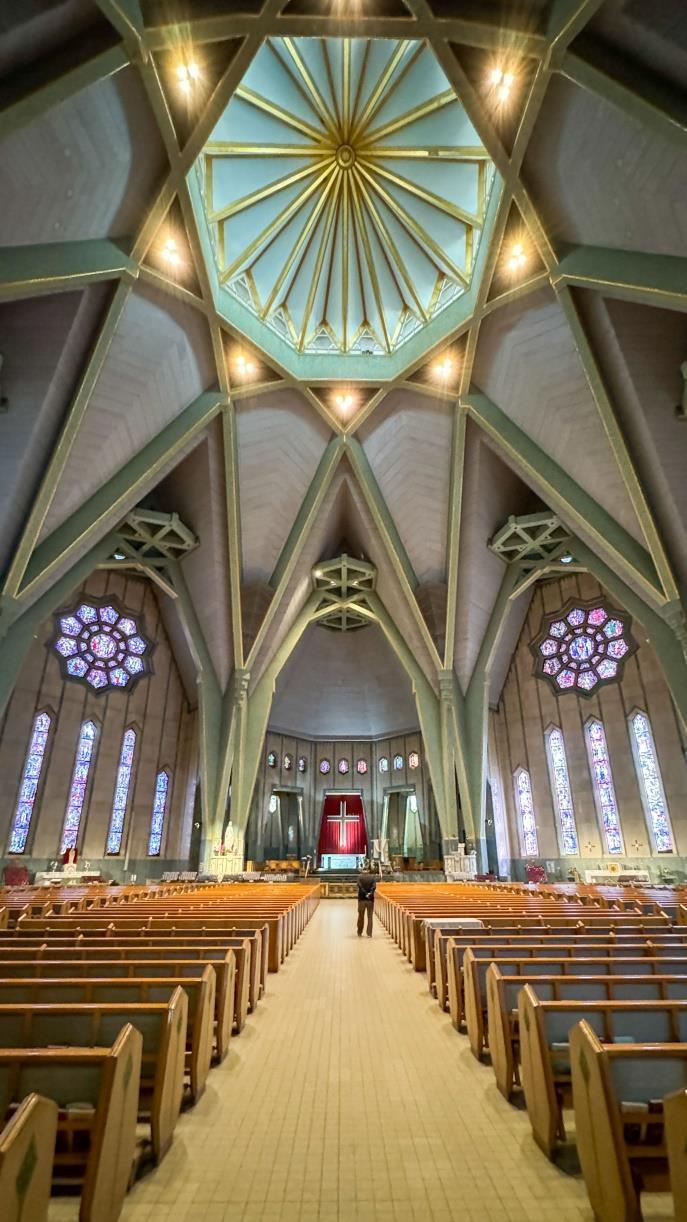
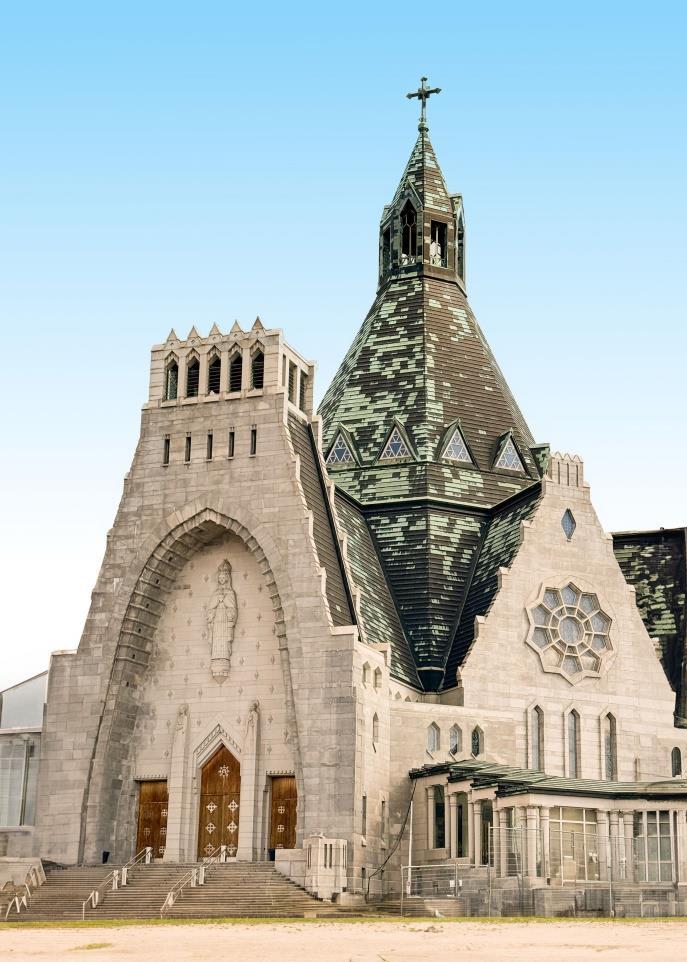
It is Canada’s national shrine to the Virgin Mary, and it is the site of major pilgrimages for the faithful. It was built in 1888 and three people are said to have witnessed a statue of the Virgin placed inside open its eyes.
The original church on these grounds was a small wooden structure built in 1679, The second fieldstone structure, called the Old Shrine, was built in 1720. It is the oldest church in Canada in which Mass is celebrated daily. We were able to take a short tour of this historic building

A rather interesting feature of the city outskirts was what we assumed to be a generous supply of attractive affordable housing.



After the visit to Trois Rivieres, the rest of our cruise was an interesting continuation of our sail up the St. Lawrence Seaway to Toronto where we disembarked the Polaris and were immediately driven to the Toronto airport for our flight back to Fr. Lauderdale. We were happy that we had previously been in Toronto because we saw nothing except amazing traffic and huge buildings housing the large population of the city.
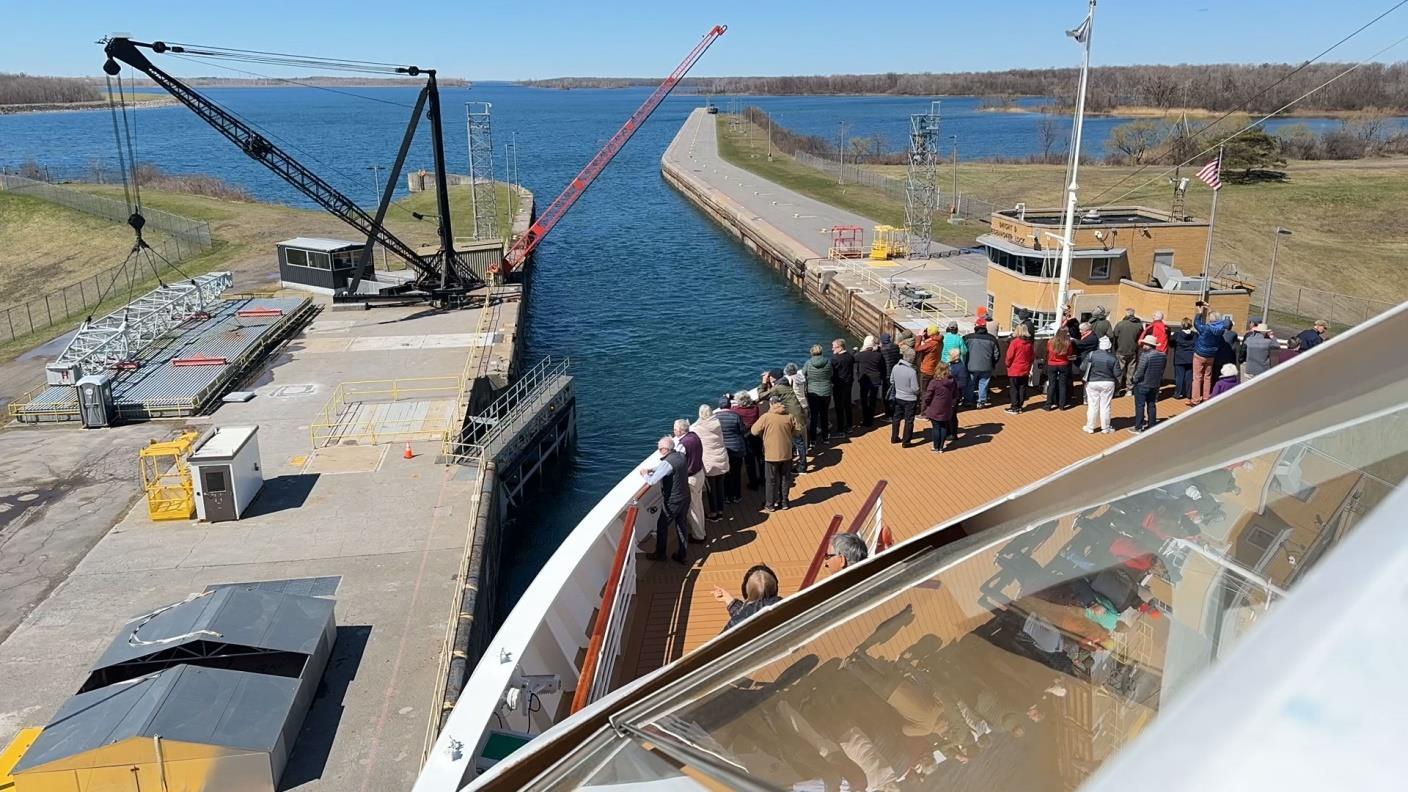
The St. Lawrence Seaway Lock System. The USA and Canada joined forces to create the lock system which made the lower St. Lawrence River navigable to the Great Lakes. The difference in elevation is and there are 15 locks to accommodate the changes. The Canadians built 13 and the US 2. The entire system is 2,299 miles (about twice the distance from Florida to New York City) long and over 200 million tons of cargo travel the waterway on an annual basis. It provides thousands of jobs for both US and Canadian citizens. It is an economic giant for both countries. We went through several of these locks once we entered the seaway and it was fascinating to watch the lock operations. We had already gone through the Panama Canal locks with their “mules’ that pull the boats about, but the St. Lawrence Seaway locks do not rely upon these vehicles. The most interesting part of our passages through the locks was seeing how little space there is between the walls of the locks and the sides of our ship (approximately SIX inches). The captains of these ships have be spot on in their navigating skills.
On the remainder of the day’s cruise, we enjoyed the mild weather, the soft springtime light, and the beautiful riverine scenery. It was amazing to see what elaborate summer homes have been build on the smallest of rocks in the middle of the river. These are really there to get away from the crowds.

The trip ended peacefully at 6 AM as we docked in Toronto. From there, a long rush hour bus ride to the airport fro our 3 hour flight back to our starting point, Fort Lauderdale, Florida.
We enjoyed this leisurely cruise revisiting many familiar ports and renewing our acquaintance with them. The science studies on board were fascinating and as usual the ambience was thoroughly enjoyable. Happy and Helpful staff add to the pleasures of cruising with Viking, and we like the opportunities to taste different cuisines and listen to experts discuss everything from histories of the places visited to their own personal stories about adventures in foreign lands. We were happy that we decided to take this repositioning cruise!
Be sure to look at more of Kay’s pictorial documentation of all the lovely and interesting places we visited on this delicious Viking cruise up the Atlantic Coast.
https://www.kaygilmour.smugmug.com
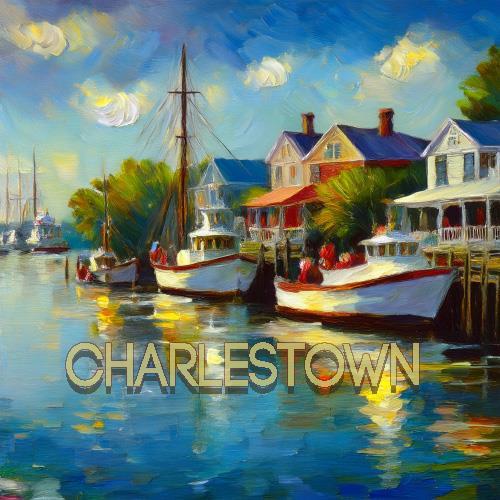

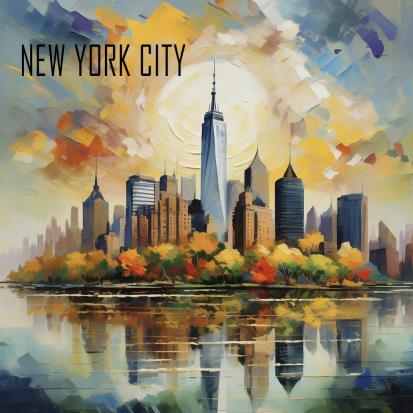

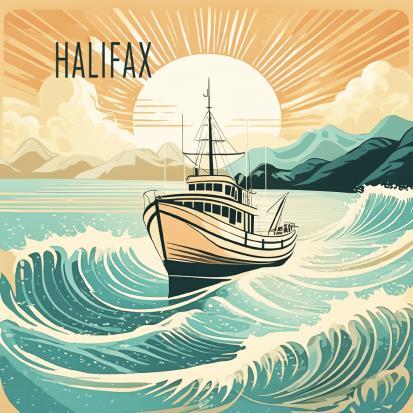

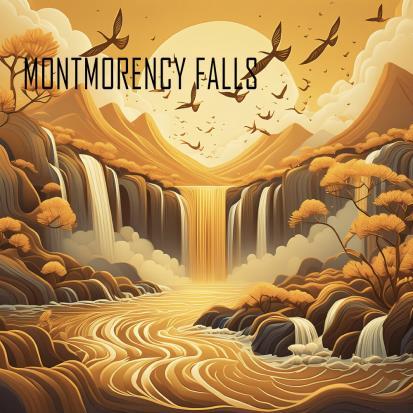


RELAXING, INSTRUCTIONAL, DELIGHTFUL